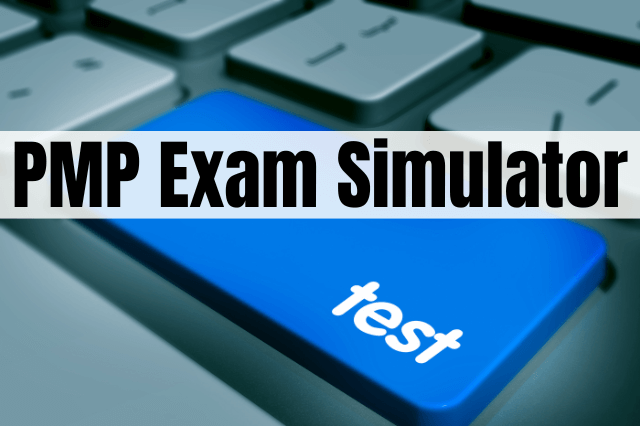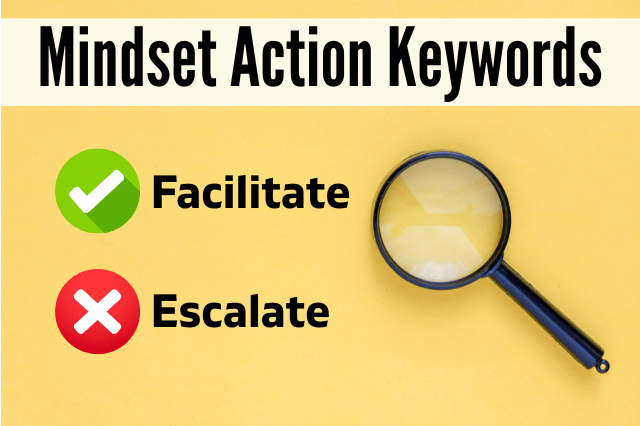Last Updated on December 15, 2024 by andrewshih
Do you know the essential PMP mindsets to pass the exam? The PMP exam isn’t just about memorizing terms and processes; it’s about thinking and acting like a professional project manager in real-life scenarios.
We’ll explore nine essential PMP exam mindsets critical for passing the test and succeeding in your project management career.

1. Servant Leadership
Core Principle
The first key PMP exam mindset is Servant Leadership.
Project managers are not simply taskmasters or controllers; they serve to support, empower, and guide their team members toward success. This approach emphasizes leadership that prioritizes the well-being, growth, and success of the team over individual achievement.
Servant leaders focus on fostering a positive environment where every team member feels valued and motivated.
Best Practice
As a servant leader, envision yourself as a facilitator who removes obstacles and provides resources rather than someone who directs every detail.
Encourage collaboration, invite ideas, and listen attentively to your team’s concerns and feedback.
Avoid abrupt, unilateral decisions, such as removing a team member without proper support or context.
Instead, work to understand each team member’s strengths and challenges, offering guidance that builds their confidence and capabilities.
Exam Insight
On the exam, if you come across an answer option that involves empowering the team, such as offering guidance instead of directly controlling the outcome, it’s likely the correct choice. PMI values answers that reflect a leadership style focused on team development, mutual respect, and collective problem-solving.
Example
Suppose you have a team member who is struggling with a complex task. Rather than stepping in to complete it yourself, a servant leader would offer coaching or find additional resources to support them. By pairing them with an experienced team member, you help them develop the necessary skills, which ultimately strengthens the team as a whole.
Practice Question:
Your Agile team is facing difficulties meeting their sprint commitments due to unexpected technical challenges. Some team members seem disengaged, and morale is dropping. The Product Owner is also becoming frustrated, as key deliverables are at risk. As the Agile project manager, you recognize that a traditional directive approach won’t be effective in this situation.
What is the best servant leadership approach to support your team?
A. Take proactive steps by assigning tasks based on each team member’s strengths, setting clear deadlines, and ensuring the team stays on track.
B. Step back and let the team self-organize completely, as Agile teams should be empowered to resolve issues on their own without interference.
C. Facilitate an open team discussion to identify blockers, encourage team-driven solutions, and offer guidance while ensuring psychological safety for the team.
D. Arrange a meeting with the Product Owner and senior leadership to explain the situation, manage expectations, and request additional time or resources if needed.
Correct Answer:
✔ C. Facilitate an open team discussion to identify blockers, encourage team-driven solutions, and offer guidance while ensuring psychological safety for the team.
Servant leadership empowers the team rather than controlling them. By facilitating discussions and encouraging self-organization, a servant leader removes blockers, supports collaboration, and fosters an environment where team members feel valued and motivated to solve problems together.
Why Other Choices Are Incorrect:
❌ A. Take proactive steps by assigning tasks based on each team member’s strengths, setting clear deadlines, and ensuring the team stays on track.
- Servant leaders do not assign tasks or control work distribution—instead, they help teams self-organize and make their own decisions about how to proceed.
❌ B. Step back and let the team self-organize completely, as Agile teams should be empowered to resolve issues on their own without interference.
- While Agile teams are self-organizing, servant leaders actively support them by removing obstacles and offering guidance—not abandoning them during challenges.
❌ D. Arrange a meeting with the Product Owner and senior leadership to explain the situation, manage expectations, and request additional time or resources if needed.
- While managing stakeholder expectations is important, the primary focus of a servant leader is to empower and support the team—not just escalate problems.

2. Assess Before Acting
Core Principle
The Assess Before Acting mindset centers around informed decision-making.
Project management involves numerous moving parts, and it’s crucial to take a step back to understand the entire situation before reacting.
This approach is essential in minimizing risks, preventing costly mistakes, and ensuring actions align with the project’s goals and stakeholder expectations.
Best Practice
To apply this mindset, make it a habit to review relevant documents, consult project plans, and communicate with stakeholders before taking action.
When issues or unexpected changes arise, pause to consider all potential outcomes. Avoid knee-jerk reactions; instead, seek out facts and insights to make the most informed choice.
By embracing a measured approach, you not only prevent possible negative consequences but also reinforce a culture of deliberate and strategic decision-making within your team.
Exam Insight
During the PMP exam, avoid selecting answers that reflect rushed or reactive actions.
PMI values options where the project manager takes time to gather information, analyze the situation, and consider the best approach. Questions may present a problem or risk; in these cases, answers involving assessment, review, or planning before taking action are often the best choices.
Example
Imagine discovering a delay in achieving one of your project’s milestones. Instead of immediately reallocating resources or reassigning tasks, first assess what led to the delay. Review project documents, speak with team members, and analyze the root cause. Once you have a clear understanding, you can implement a targeted and effective solution.
Practice Question:
Your Agile team is facing pressure from a key stakeholder to deliver a new feature ahead of schedule. The stakeholder insists that the team should immediately shift priorities and start working on the feature, even though this was not part of the current sprint commitment. The team is divided—some believe they should adjust the sprint scope to accommodate the request, while others argue that sudden changes could disrupt their workflow.
As the Agile project manager, what is the best approach based on the Assess Before Acting principle?
A. Accept the stakeholder’s request and immediately reprioritize the backlog, as responding to stakeholder needs quickly is a core Agile principle.
B. Pause and evaluate the request’s impact on sprint commitments, technical feasibility, and business value before making any changes, ensuring alignment with project goals.
C. Reject the request outright and remind the stakeholder that Agile teams should not change sprint commitments once the sprint has started.
D. Escalate the issue to senior leadership for a decision on whether to reallocate resources and adjust the project timeline.
Correct Answer:
✔ B. Pause and evaluate the request’s impact on sprint commitments, technical feasibility, and business value before making any changes, ensuring alignment with project goals.
The Assess Before Acting principle emphasizes informed decision-making rather than reacting impulsively. Agile encourages adaptability, but changes should be evaluated carefully to minimize risks. The best approach is to analyze the impact of the request before deciding how to proceed.
Why Other Choices Are Incorrect:
❌ A. Accept the stakeholder’s request and immediately reprioritize the backlog, as responding to stakeholder needs quickly is a core Agile principle.
- Agile values responsiveness, but not at the cost of disrupting commitments mid-sprint. Assessing the impact first ensures that changes are made wisely.
❌ C. Reject the request outright and remind the stakeholder that Agile teams should not change sprint commitments once the sprint has started.
- While preserving sprint focus is important, rejecting the request without evaluation dismisses potential high-value opportunities. A thoughtful assessment is needed.
❌ D. Escalate the issue to senior leadership for a decision on whether to reallocate resources and adjust the project timeline.
- Agile teams should handle prioritization decisions collaboratively rather than defaulting to escalation. Evaluating the request first is key.

3. Value Delivery
Core Principle
Value delivery is a fundamental aspect of successful project management.
In this mindset, it’s not merely about completing tasks or achieving project milestones but ensuring that each deliverable provides genuine benefit to the customer and aligns with the broader organizational objectives.
This mindset prioritizes meaningful outcomes over task completion for its own sake.
Best Practice
Focus on the bigger picture by continuously checking in with stakeholders and aligning project activities with their evolving needs.
Be open to adjusting the scope or deliverables to ensure they provide real value. This approach often involves flexibility, as customer needs can change throughout a project’s lifecycle. Think of value delivery as a continuous commitment rather than a one-time event upon project completion.
Exam Insight
On the PMP exam, prioritize answers where the project manager emphasizes outcomes that truly matter to stakeholders, rather than simply completing tasks.
Look for options where the PM checks in with stakeholders or makes adjustments to enhance value alignment with business objectives.
Example
If you’re managing a software development project and realize the end product may not fully meet stakeholder expectations, don’t simply proceed to finish the project. Consider suggesting an MVP (Minimum Viable Product) to demonstrate progress and get early feedback. This not only ensures the project stays aligned with stakeholder needs but also builds trust and enhances value.
Practice Question:
Your Agile team has been consistently completing all sprint backlog items, but the Product Owner has raised concerns that stakeholders are not seeing the expected business impact. Some completed features are rarely used, while others require modifications soon after release. The team is focused on completing tasks but may not be fully considering value delivery.
As the Agile project manager, what is the best approach to ensure the team delivers meaningful outcomes?
A. Shift the team’s focus from task completion to business value by regularly engaging stakeholders and incorporating feedback into backlog refinement.
B. Continue prioritizing sprint completion rates and ensure the team meets their commitments, as on-time delivery is critical to Agile success.
C. Introduce a stricter Definition of Done (DoD) to ensure all deliverables are fully tested and meet quality standards before being released.
D. Ask the Product Owner to limit stakeholder involvement to avoid last-minute changes that disrupt the team’s planned work.
Correct Answer:
✔ A. Shift the team’s focus from task completion to business value by regularly engaging stakeholders and incorporating feedback into backlog refinement.
Agile is not just about completing tasks – it is about delivering meaningful value to the customer. Regular engagement with stakeholders, continuous feedback loops, and prioritizing high-impact features help teams align work with business outcomes rather than just sprint goals.
Why Other Choices Are Incorrect:
❌ B. Continue prioritizing sprint completion rates and ensure the team meets their commitments, as on-time delivery is critical to Agile success.
- Completing tasks on time does not guarantee value delivery. Agile prioritizes meaningful outcomes over rigid adherence to deadlines.
❌ C. Introduce a stricter Definition of Done (DoD) to ensure all deliverables are fully tested and meet quality standards before being released.
- A strong DoD ensures quality, but it does not address whether the features provide real business value. Stakeholder feedback is key.
❌ D. Ask the Product Owner to limit stakeholder involvement to avoid last-minute changes that disrupt the team’s planned work.
- Stakeholder engagement is crucial in Agile to ensure deliverables align with real needs. Limiting their involvement reduces feedback and risks delivering low-value features.

4. Proactive Risk Management
Core Principle
Proactive risk management involves identifying, analyzing, and mitigating risks before they impact the project.
Instead of waiting for issues to occur, proactive project managers anticipate potential risks and take preventive action. This approach minimizes the chance of disruptions and creates a culture of preparedness within the team.
Best Practice
Develop a habit of conducting regular risk assessments and maintaining open lines of communication with your team regarding potential issues.
Identify and document risks early on, then create mitigation plans to address them. Proactive risk management means focusing on prevention rather than reaction. This approach not only helps prevent crises but also instills confidence within the team and among stakeholders.
Exam Insight
During the exam, look for answers that emphasize preventive action in managing risks. PMI favors responses where the PM is actively managing potential risks rather than waiting for them to turn into problems.
Example
Imagine you’re managing a construction project and foresee potential delays due to weather. Rather than waiting for the weather to cause delays, proactively arrange backup resources or adjust the schedule. This level of preparedness helps the project stay on track, even under challenging conditions.
Practice Question:
Your Agile team is developing a new customer-facing application. While the project is progressing well, you recognize that integration with a third-party payment gateway could pose a risk due to potential API changes and unpredictable downtime. The team has not yet encountered any issues, but you want to take a proactive approach to minimize disruption later in development.
As the Agile project manager, what is the best course of action?
A. Set up a contingency plan by scheduling buffer sprints toward the end of the project, allowing time to address any unforeseen API-related risks without impacting other deliverables.
B. Focus on delivering high-value features first and address API integration risks later when they become more relevant to development.
C. Encourage the team to follow Agile principles of adaptability, documenting API risks for awareness but handling any issues as they arise instead of preemptively allocating effort to them.
D. Conduct an early risk assessment with the team, prioritize API stability testing in the upcoming sprints, and explore fallback mechanisms to mitigate potential failures before they occur.
Correct Answer:
✔ D. Conduct an early risk assessment with the team, prioritize API stability testing in the upcoming sprints, and explore fallback mechanisms to mitigate potential failures before they occur.
Proactive risk management anticipates risks and takes preventive action before problems arise. By testing early and developing fallback solutions, the team minimizes disruptions, reduces technical debt, and avoids costly last-minute fixes.
Why Other Choices Are Incorrect:
❌ A. Set up a contingency plan by scheduling buffer sprints toward the end of the project, allowing time to address any unforeseen API-related risks without impacting other deliverables.
- Buffer sprints create unnecessary delays and inefficiencies. Agile teams should integrate risk mitigation into their ongoing workflow instead of reserving last-minute fixes.
❌ B. Focus on delivering high-value features first and address API integration risks later when they become more relevant to development.
- Delaying risk assessment contradicts proactive risk management. Agile balances value delivery with risk mitigation to avoid last-minute disruptions.
❌ C. Encourage the team to follow Agile principles of adaptability, documenting API risks for awareness but handling any issues as they arise instead of preemptively allocating effort to them.
- Adaptability is important, but proactive risk management is about taking action early to prevent future problems. Merely documenting risks without mitigation planning is reactive, not proactive.

5. Stakeholder Engagement
Core Principle
Effective project managers know that engaging stakeholders is essential for project success.
This mindset focuses on proactive, consistent, and meaningful engagement with stakeholders throughout the project. It’s about building trust, understanding needs, and addressing concerns promptly to ensure alignment with project goals.
Best Practice
Make stakeholder engagement a priority by scheduling regular check-ins, communicating openly, and tailoring engagement based on each stakeholder’s needs and influence. Utilize face-to-face or video communication when possible, as it can be more effective for building rapport and addressing concerns.
Exam Insight
When faced with questions about stakeholder management, prioritize answers that reflect continuous engagement. PMI values project managers who keep stakeholders actively involved, addressing their needs and building lasting relationships.
Example
If you’re leading a project that affects multiple departments, hold regular updates to address any new requirements or concerns. This helps maintain alignment, fosters trust, and ensures the project meets all stakeholder expectations.
Practice Question:
Your Agile team is developing a new product feature for a key client. The stakeholder initially provided high-level requirements but has been unavailable for feedback during the last two sprints. The team proceeded with development based on their best understanding, but during a recent demo, the stakeholder expressed dissatisfaction, requesting major changes that could impact the delivery timeline.
As the Agile project manager, what is the best approach to improve stakeholder engagement and prevent similar issues in the future?
A. Develop a stakeholder engagement strategy that includes clear expectations for ongoing participation, regular feedback sessions, and opportunities for early validation to reduce late-stage changes.
B. Proceed with development as planned since Agile teams embrace change, and addressing stakeholder feedback at any point aligns with Agile’s adaptive nature.
C. Request a formal stakeholder availability agreement, ensuring senior leadership enforces participation in key reviews to prevent misalignment.
D. Streamline stakeholder communication by focusing interactions primarily on Sprint Reviews, allowing the team to minimize interruptions and maintain development velocity.
Correct Answer:
✔ A. Develop a stakeholder engagement strategy that includes clear expectations for ongoing participation, regular feedback sessions, and opportunities for early validation to reduce late-stage changes.
Agile relies on continuous stakeholder engagement to ensure alignment and prevent costly rework. By establishing clear expectations for involvement and setting up structured feedback loops, teams can proactively manage stakeholder input and avoid late surprises.
Why Other Choices Are Incorrect:
❌ B. Proceed with development as planned since Agile teams embrace change, and addressing stakeholder feedback at any point aligns with Agile’s adaptive nature.
- Agile embraces change, but it also prioritizes early and continuous feedback to ensure value-driven development rather than accommodating late-stage disruptions.
❌ C. Request a formal stakeholder availability agreement, ensuring senior leadership enforces participation in key reviews to prevent misalignment.
- While stakeholder engagement is crucial, Agile promotes collaborative and self-managed engagement rather than rigid enforcement through leadership intervention.
❌ D. Streamline stakeholder communication by focusing interactions primarily on Sprint Reviews, allowing the team to minimize interruptions and maintain development velocity.
- Restricting stakeholder interaction to Sprint Reviews increases the risk of misalignment. Agile teams benefit from ongoing conversations and iterative feedback rather than limited, infrequent interactions.

6. Change Management
Core Principle
Change management refers to handling project changes in an organized, thoughtful manner. In predictive (waterfall) projects, this requires formal change control procedures, while in agile projects, it involves embracing flexibility and adapting quickly to changing needs.
Effective change management ensures that changes are managed in a way that benefits the project rather than derails it.
Best Practice
In predictive projects, adhere to established change procedures, evaluating and approving changes systematically to maintain alignment with the project plan.
In agile settings, remain open to adjustments based on stakeholder feedback and changing requirements. View change as an opportunity to improve and adapt the project, rather than as an obstacle.
Exam Insight
On the PMP exam, avoid answers where the PM makes changes without going through proper channels or approvals in predictive settings. Select options where the PM follows structured processes or adapts flexibly in agile environments.
Example
If a significant change request is made mid-project by a key stakeholder, in a predictive environment, you would document, assess, and formally approve the change. In agile projects, however, you might discuss the change with the team and adapt it quickly, prioritizing customer satisfaction and team adaptability.
Practice Question:
Your Agile team is in the middle of a sprint when a key stakeholder requests a new feature that was not included in the sprint backlog. The stakeholder argues that the feature is critical to business success and should be implemented immediately. However, the team is concerned that incorporating the change mid-sprint could disrupt their workflow and impact current commitments.
As the Agile project manager, what is the best way to handle this situation while maintaining an effective change management approach?
A. Acknowledge the stakeholder’s request and assess the impact of the change on the sprint goal before deciding whether it can be accommodated now or prioritized for future sprints.
B. Accept the change request immediately, as Agile values responding to change over following a plan, ensuring the team is always working on the highest-priority items.
C. Reject the request and remind the stakeholder that Agile teams commit to sprint goals, and changes should only be considered during backlog refinement or Sprint Planning.
D. Escalate the request to senior leadership for approval, ensuring that major changes are reviewed and validated before disrupting the team’s planned work.
Correct Answer:
✔ A. Acknowledge the stakeholder’s request and assess the impact of the change on the sprint goal before deciding whether it can be accommodated now or prioritized for future sprints.
Agile embraces change, but in a structured way. Teams should evaluate the impact of changes on current sprint goals rather than reacting impulsively. If a change disrupts sprint commitments, it should be prioritized in the backlog for future iterations rather than inserted mid-sprint.
Why Other Choices Are Incorrect:
❌ B. Accept the change request immediately, as Agile values responding to change over following a plan, ensuring the team is always working on the highest-priority items.
- Agile is flexible, but it does not mean allowing uncontrolled change at any time. Accepting changes without assessing their impact disrupts team focus and delivery commitments.
❌ C. Reject the request and remind the stakeholder that Agile teams commit to sprint goals, and changes should only be considered during backlog refinement or Sprint Planning.
- Agile is not about rigidly rejecting changes but about evaluating their value and impact before deciding how to handle them.
❌ D. Escalate the request to senior leadership for approval, ensuring that major changes are reviewed and validated before disrupting the team’s planned work.
- Agile teams are self-managing and should handle change discussions directly with stakeholders rather than defaulting to escalation.

7. Solution-Oriented Mindset
Core Principle
The solution-oriented mindset emphasizes accountability and an unwavering focus on resolving issues directly rather than deflecting or avoiding them.
This mindset ensures that the project manager takes ownership of problems and collaborates with their team to devise constructive, effective solutions.
Best Practice
Embrace accountability when issues arise. Collaborate with your team to understand the root cause of the problem and work toward viable solutions.
Avoid escalating issues prematurely or deferring responsibility to other departments. By addressing challenges within your team’s capabilities, you build a culture of accountability and problem-solving.
Exam Insight
On the PMP exam, prioritize answers where the PM addresses challenges directly rather than passing the problem to others or escalating unnecessarily. PMI values project managers who maintain a positive, proactive approach in the face of difficulties.
Example
If a team member reports a technical issue, avoid immediately escalating to senior management. Instead, collaborate with the team to understand the problem and brainstorm potential solutions, such as consulting an expert or adjusting timelines, showing that you are committed to resolving the issue within the team’s scope.
Practice Question:
During an Agile project, your team encounters a major technical issue that is blocking progress on a critical feature. Some team members believe the problem stems from unclear requirements provided by the Product Owner, while others argue that the development team should have anticipated these challenges earlier. Frustration is growing, and productivity is slowing as the team debates who is responsible.
As the Agile project manager, how should you apply a solution-oriented mindset to handle this situation?
A. Allow the team to work through the issue independently, as Agile teams are self-organizing and should take full responsibility for resolving their own challenges.
B. Facilitate a discussion with the team and Product Owner to assess the root cause, ensuring requirements are clarified and aligning on an immediate plan to resolve the issue.
C. Escalate the issue to senior leadership and request intervention to ensure the Product Owner provides clearer requirements going forward.
D. Acknowledge the concerns of both sides and schedule a lessons-learned session at the end of the sprint to prevent similar issues from occurring in the future.
Correct Answer:
✔ B. Facilitate a discussion with the team and Product Owner to assess the root cause, ensuring requirements are clarified and aligning on an immediate plan to resolve the issue.
A solution-oriented mindset focuses on finding constructive resolutions rather than assigning blame. By facilitating collaboration between the team and the Product Owner, the Agile project manager ensures that misalignments are addressed quickly and work can continue productively.
Why Other Choices Are Incorrect:
❌ A. Allow the team to work through the issue independently, as Agile teams are self-organizing and should take full responsibility for resolving their own challenges.
- Self-organization does not mean the project manager is absent. A servant leader removes blockers and facilitates alignment when conflicts arise.
❌ C. Escalate the issue to senior leadership and request intervention to ensure the Product Owner provides clearer requirements going forward.
- Escalation should not be the first option—teams should work together to resolve issues before bringing in leadership.
❌ D. Acknowledge the concerns of both sides and schedule a lessons-learned session at the end of the sprint to prevent similar issues from occurring in the future.
- Continuous improvement is important, but waiting until the end of the sprint does not resolve the immediate blocker.

8. Empowering Team Autonomy
Core Principle
Empowering team autonomy is especially critical in agile environments, where teams are expected to be self-organizing and self-sufficient. This mindset means trusting the team to make decisions and empowering them to take ownership of their work, which fosters creativity, innovation, and accountability.
Best Practice
Encourage self-organization within the team by allowing them to set goals, decide how to complete their work, and own their tasks.
Your role as a project manager is to provide resources, remove obstacles, and trust the team’s decision-making. This approach reinforces team confidence, motivation, and accountability.
Exam Insight
During the PMP exam, look for answers that demonstrate the PM encouraging team autonomy, especially in agile or hybrid project settings. Avoid responses where the PM excessively directs or micromanages tasks.
Example
Imagine your agile team is preparing for a new sprint. Rather than assigning specific tasks to each team member, allow the team to decide how they’ll approach sprint goals. This freedom fosters a sense of ownership, innovation, and motivation as they work toward achieving shared objectives.
Practice Question:
Your Agile team has been working well together, but during a recent sprint review, a stakeholder raised concerns that different team members seem to be making decisions inconsistently. While the team values their autonomy, the lack of alignment has led to variations in implementation approaches across sprints. Some stakeholders are pushing for more structured oversight, while others argue that the team should continue to self-organize.
As the Agile project manager, what is the best approach to ensure autonomy while maintaining alignment?
A. Allow the team to continue making independent decisions without intervention, trusting that inconsistencies will naturally resolve as the team gains experience.
B. Assign a lead developer or senior team member to oversee decisions, ensuring all technical choices align with project goals and maintain consistency.
C. Implement a formal review process where all major team decisions must be validated by project leadership before moving forward.
D. Facilitate a team discussion to establish shared decision-making guidelines, ensuring autonomy while keeping consistency in key project decisions.
Correct Answer:
✔ D. Facilitate a team discussion to establish shared decision-making guidelines, ensuring autonomy while keeping consistency in key project decisions.
Empowering team autonomy does not mean a lack of structure—it means allowing teams to self-organize while maintaining alignment and accountability. Establishing guidelines for decision-making helps balance autonomy with consistency, ensuring that the team remains self-sufficient without creating confusion.
Why Other Choices Are Incorrect:
❌ A. Allow the team to continue making independent decisions without intervention, trusting that inconsistencies will naturally resolve as the team gains experience.
- While trusting the team is important, failing to address misalignment can lead to ongoing issues, impacting product quality and stakeholder confidence.
❌ B. Assign a lead developer or senior team member to oversee decisions, ensuring all technical choices align with project goals and maintain consistency.
- Empowering autonomy means decisions should be shared across the team, not centralized under one individual. This contradicts self-organization and could lead to bottlenecks.
❌ C. Implement a formal review process where all major team decisions must be validated by project leadership before moving forward.
- Requiring approvals contradicts Agile principles and slows down the team, limiting creativity and innovation instead of fostering autonomy.

9. Avoiding Extreme Measures
Core Principle
Effective project managers avoid extreme responses, such as drastic changes or over-escalation, without justification.
Maintaining a balanced and rational approach to issues ensures a stable and productive project environment, avoiding unnecessary stress or disruption for the team.
Best Practice
Approach conflicts and issues calmly and constructively, even under pressure.
Avoid making severe decisions, like removing team members without sufficient cause or escalating issues at the first sign of trouble. Instead, foster open dialogue, understand the underlying causes, and focus on practical solutions to address challenges collaboratively.
Exam Insight
On the exam, avoid answers that suggest extreme measures or quick fixes. PMI values responses that show a calm, balanced approach, addressing issues directly and reasonably without resorting to drastic actions.
Example
If a team member’s performance is declining, resist the urge to escalate the problem immediately. Instead, meet with the team member to understand their challenges, offer support, and develop a performance improvement plan if needed. This approach maintains a balanced environment and often leads to better long-term outcomes for both the individual and the project.
Practice Question:
Your Agile team has encountered a critical defect in a key feature just before a major product demonstration. A senior stakeholder demands that the team stop all other work immediately and focus entirely on fixing the issue, even though other critical features are still in progress. Some team members believe the defect can be resolved without disrupting the entire sprint, while others are anxious about the stakeholder’s reaction.
As the Agile project manager, what is the best course of action to maintain a balanced and rational approach?
A. Pause and assess the severity of the defect with the team, identifying the best course of action that minimizes disruption while ensuring the issue is addressed in time for the demo.
B. Prioritize fixing the defect above all else, instructing the team to immediately shift focus so the stakeholder’s concerns are fully addressed before the demonstration.
C. Escalate the issue to senior leadership for a decision on whether the defect requires a full team commitment, ensuring that executive priorities are met.
D. Reassure the stakeholder that Agile teams follow an iterative approach, noting that the issue can be addressed in a future iteration to avoid disrupting the current sprint plan.
Correct Answer:
✔ A. Pause and assess the severity of the defect with the team, identifying the best course of action that minimizes disruption while ensuring the issue is addressed in time for the demo.
Effective project managers avoid extreme responses and seek balanced, well-reasoned solutions. By evaluating the defect’s impact and collaborating with the team, the project manager ensures that the issue is handled appropriately without unnecessarily disrupting the sprint or reacting impulsively to stakeholder pressure.
Why Other Choices Are Incorrect:
❌ B. Prioritize fixing the defect above all else, instructing the team to immediately shift focus so the stakeholder’s concerns are fully addressed before the demonstration.
- Redirecting all efforts without assessing the impact could derail other critical work and create unnecessary project risks.
❌ C. Escalate the issue to senior leadership for a decision on whether the defect requires a full team commitment, ensuring that executive priorities are met.
- Escalation should not be the first response. The Agile team is responsible for decision-making and should assess the issue internally before involving leadership.
❌ D. Reassure the stakeholder that Agile teams follow an iterative approach, noting that the issue can be addressed in a future iteration to avoid disrupting the current sprint plan.
- Deferring the issue entirely without evaluation could damage stakeholder trust and result in unnecessary escalations. Agile is flexible, but critical defects should be addressed promptly.
Next Step
Adopting these core PMP mindsets will set you up for success on the exam and in real-world project management.
- Leading with servant leadership
- Delivering value
- Managing risks proactively
- Empowering your team
- Staying balanced under pressure
These are essential traits for any successful project manager. Embrace these mindsets, and you’ll not only pass the PMP exam but also thrive in your project management career.
The next step is to check out Agile Mindsets and PMP Exam Prep Guide with study notes, exam strategies, study plans, and much more.



